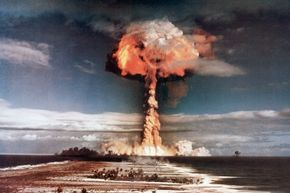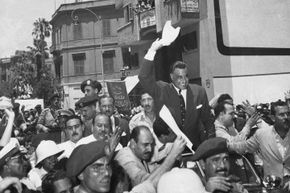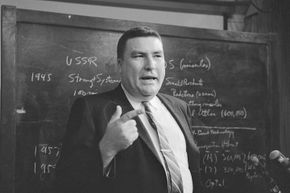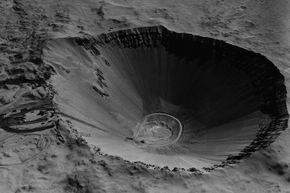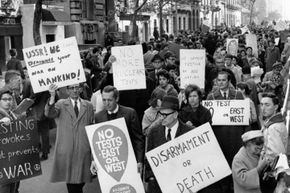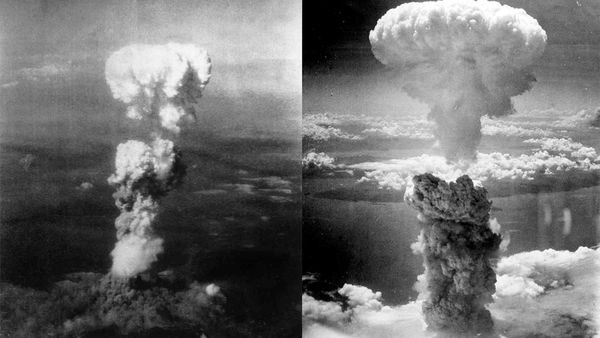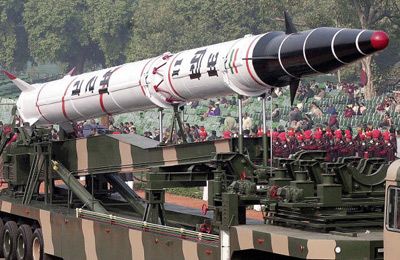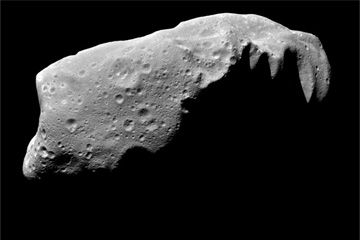Around 9 a.m. on Aug. 6, 1945, Lt. Col. Paul Tibbets was flying a plane named after his mom high above the Japanese island of Honshu. A few seconds past 9:15, the Enola Gay released its payload, and Tibbets put his plane into a tight 159-degree turn to escape the shockwaves he knew would be coming [source: Terkel].
Far down below him, a man named Tsutomu Yamaguchi was just arriving in downtown Hiroshima on his way to a meeting. An engineer for Mitsubishi Heavy Industries, Yamaguchi was in town on a business trip. As he stepped off the tram, a white light filled his vision. Two miles (3 kilometers) away, an atomic bomb known as "Little Boy" had just detonated, instantly killing 80,000 people [source: McCurry]. Temporarily blinded, left eardrum destroyed, the top half of his body horribly burned, Yamaguchi made his way down the street. As he walked he passed the real "walking dead" — people burned so badly, flesh was hanging off them. Eventually, he found an air raid shelter where he spent the night [source: McNeil].
Advertisement
The next morning Yamaguchi was determined to get out of the city and managed to board a train back to his hometown. His hometown happened to be a city called Nagasaki. Two days later, Yamaguchi was at his workplace telling his boss about his harrowing near-death experience in Hiroshima when a familiar white light flooded the room. Once again he was 2 miles (3 kilometers) from Ground Zero where a second atom bomb called "Fat Man" had found its target. 70,000 people died that day. Somehow, Yamaguchi wasn't one of them [source: McNeil].
After years of recovery, Yamaguchi returned to work as an engineer, dying in 2010 at the age of 93. Despite his remarkable longevity, the world's only officially recognized double nuclear bomb survivor was plagued by painful health problems all his life. His children also say they believe the illnesses they suffer are related to their father's double-radiation exposure [source: McNeil].
People have called Yamaguchi "lucky," but that's definitely a "glass-half-full" assessment. Was he incredibly lucky to survive two nuclear blasts? Or incredibly unlucky to be in the wrong place at the wrong time — twice? One way or another, Yamaguchi witnessed two of the most nightmarish events in human history.
The people responsible for dropping those bombs, from the pilot of the Enola Gay to President Truman who gave the order, always maintained they had no regrets [source: Terkel]. But there's a reason nuclear bombs have never been used since Nagasaki. Actually, there are lots of reasons. But one of the most powerful is the sheer inhuman magnitude of the devastation they can wreak. Since 1945 no nation has been able to bring itself to unleash that degree of destruction on the world.
But humanity has also never had so much power at its disposal, and in the wake of World War II, some wondered whether nuclear weapons could be used for peaceful, civilian purposes. It was with that thought in mind that some of the scientists who helped develop the bomb began suggesting to government officials that there might be ways to deploy nukes without blowing anybody up. It seemed at the time that atomic weapons could provide enormous explosive power for relatively little cost. In other words, you could literally get a lot of bang for your buck. But enthusiasm isn't enough by itself. It took one of the biggest international crises of the 20th century to bring Operation Plowshare into being in 1958 [source: OSTI].
Advertisement
